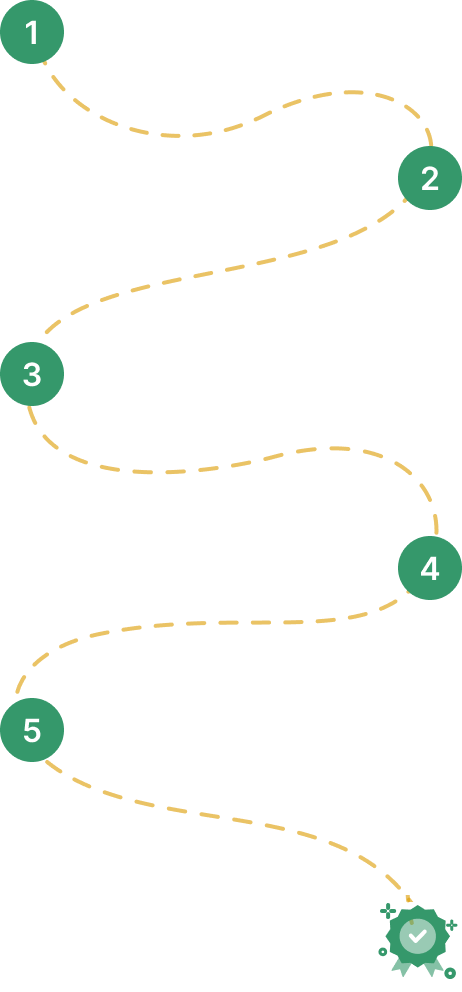- Home
- NoSQL Database Courses
- Cassandra Training


Real-time Use cases | 24/7 Lifetime Support | Certification Based Curriculum |
Flexible Schedules | One-on-one doubt clearing | Career path guidance |
Take your career to the next level as a certified Apache Cassandra developer by acquiring all the skills through our hands-on training sessions. You will gain in-depth knowledge on all the key fundamentals of Apache Cassandra such as architecture, features, data model, etc., and also work on two real-time projects during training which helps in clearing the Apache Cassandra certification exam. Enroll now and get certified.
You will be exposed to the complete Cassandra Trainingcourse details in the below sections.
This module gives you a brief description on introduction of Cassandra and also explains the differences between NoSQL and RDBMS databases, what are the various NoSQL databases, various Cassandra features, explains why Cassandra scores over other NoSQL databases, Distinguish between use cases when Cassandra is a strong choice and when it is not, Understand the use cases where Cassandra is implemented.
Quick Review of RDBMS: Transactions ACIDity, Schema, Two Phase Commit Sharing and Share Nothing Architecture Feature Based Key Based Lookup Table Based NoSQL Databases Brewers CAP Theorem Cassandra Definition and Features Distributed and Decentralised Cassandra Elastic Scalability High Availability and Fault Tolerance in Cassandra Tuneable Consistency Strict Consistency Casual Consistency Weak (Eventual Consistency) Cassandra Column Orientation Schema Free High Performance USE Cases for Cassandra Cassandra Installation.
Run basic Cassandra commands, Understand Design differences between RDBMS and Cassandra data model. Explain how Cassandra locate data in the data cluster, Explain expiring column and Time to Live (TTL), etc..
Installing Cassandra Running the Command-Line Client Interface Basic CLI Commands Help, Connecting to a Server Describing the Cassandra Environment Creating and Key space and Column Family in Cassandra Writing and Reading Data, The Relational Data Model Simple Introduction Cluster Key spaces Column Families Column Family Options Columns and Wide Rows and Skinny Rows and Column Sorting and Super Columns Composite Keys Design Differences between RDBMS and CASSANDRA Query Language, Referential Integrity Secondary Indexes Sorting De-Normalization Design Patterns Materialized Views.
Overview of Cassandra Architecture follows up in Intermode communication, Explains how Cassandra accomplishes some of its basic notable aspects, such as durability and high availability. Describes more complex inner workings, such as the gossip protocol, hinted handoffs, read repairs, Merkle trees etc, Understand Staged Event-Driven Architecture (SEDA).
System Key space Peer-To-Peer Gossip and Failure Detection Anti-Entropy and Read Repair Memtables, SSTables, and Commit Logs Hinted Handoff Compaction Bloom Filters Tombstones Staged Event-Driven Architecture (SEDA) Read Mutation Gossip Response Anti-Entropy Load Balance Migration Streaming Managers and Services Cassandra Daemon Storage Service Messaging Service Hinted Handoff Manager.
This module will let you know about Creating an sample RDBMS and Cassandra Application that includes Application code, Features, Creating an Database, connection to be set for interacting to database, Understand the implications of the client side joins when writing application that access data in Cassandra.
Database Design Sample Application RDBMS Design Sample Application Cassandra Design Application Code Creating Database Loading Schema Data Structures Setting Connections Population of database Application Features.
This module gives you an description about How to configure read and write properties data in Cassandra, creation of clusters, Query differences between RDBMS and Cassandra etc.
Key spaces Replicas, Replica Placement Strategy, Replication Factor Partitioner Snitches Creating Clusters in Cassandra Dynamic Ring Participation Security and Miscellaneous Settings Additional Tools Query differences between RDBMS and Cassandra Basic Write Properties, Consistency Level Basic Read Properties API’s Set Up and Inserting Data Slice Predicate Get Range Slices Multiget Slice Deleting Programmatically Defining Key spaces and Column Families.
Hadoop integration with Cassandra includes the support for: Map Reduce, Apache Pig, Apache HIVE along with the use cases.
Hadoop MapReduce Cassandra Hadoop Source Package Outputting Data to Cassandra PIG, HIVE Use Cases.
This module of Cassandra covers on the DDL, DML statements along with how to create users and assign permission for them.
Data Definition language (DDL) Statements Data Manipulation Language (DML) Create and modify Users User permission Capture CQL output to a file Import and export data CQL scripts from within CQL CQL Scripts from the command prompt.
In the last section of training, you will able to Understand what Thrift is, Cassandra web console, Demonstrate ability to implement the concepts learned during the course on a real life problem.
Basic Client API Thrift, Thrift Support for Java Exceptions Thrift Summary Cassandra Web Console Hector (Java) Features Hector API Live Project.
Mindmajix offers advanced Cassandra interview questions and answers along with Cassandra resume samples. Take a free sample practice test before appearing in the certification to improve your chances of scoring high.
Most of the Cassandra Jobs in the industry expect the following add-on skills. Hence, we offer these skills-set as FREE Courses (Basics) to ease your learning process and help you stay ahead of the competition.
Our Cassandra Training course aims to deliver quality training that covers solid fundamental knowledge on core concepts with a practical approach. Such exposure to the current industry use-cases and scenarios will help learners scale up their skills and perform real-time projects with the best practices.
25 hrs of Self-Paced Videos

Get Pricing
25 hrs of Remote Classes in Zoom/Google meet
2025 Batches
Start - End
Local Time
Weekend
Dec 20 - Jan 04
07:00 PM
Weekdays
Dec 23 - Jan 07
07:00 PM
Weekend
Dec 27 - Jan 11
09:00 AM
Weekdays
Dec 30 - Jan 14
09:00 AM
Customize your schedule here

Empower your team with new skills to Enhance their performance and productivity.

Student
I was a beginner to integration, looking for Cassandra course finally reached Mindmajix. The training was a great learning experience and good service by the team. Thank you!
Lead - Salesforce Cloud, D&IT
Senior Technical Manager
Global Head of Infra, Security and Networks,
Business Analyst at American Red Cross, Culpeper, Virginia, United States
IT Business Systems Analyst, Sales Applications • CX GTM Global Program Manager - WomenConnect
Team Leader - DB Admin


Our work-support plans provide precise options as per your project tasks. Whether you are a newbie or an experienced professional seeking assistance in completing project tasks, we are here with the following plans to meet your custom needs: